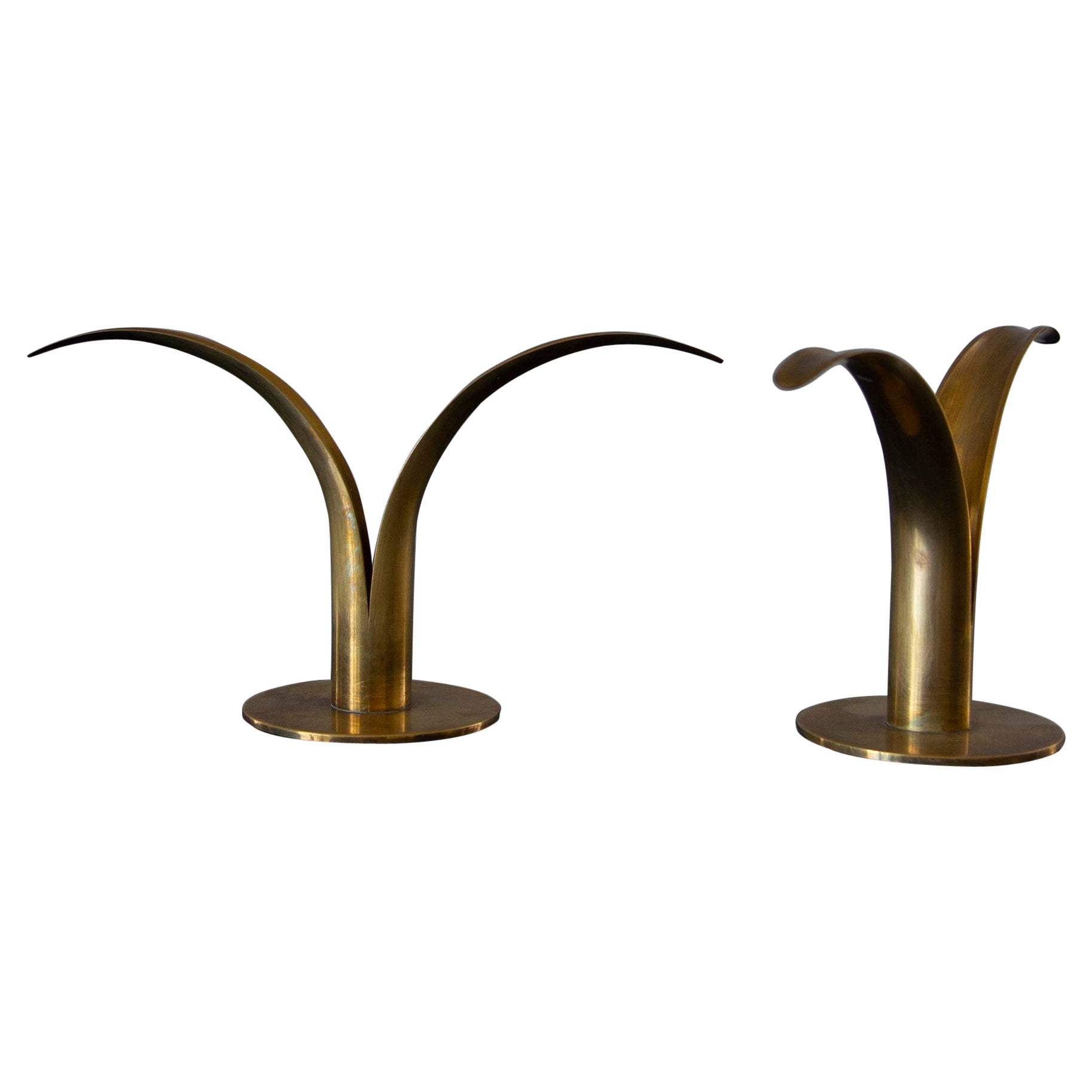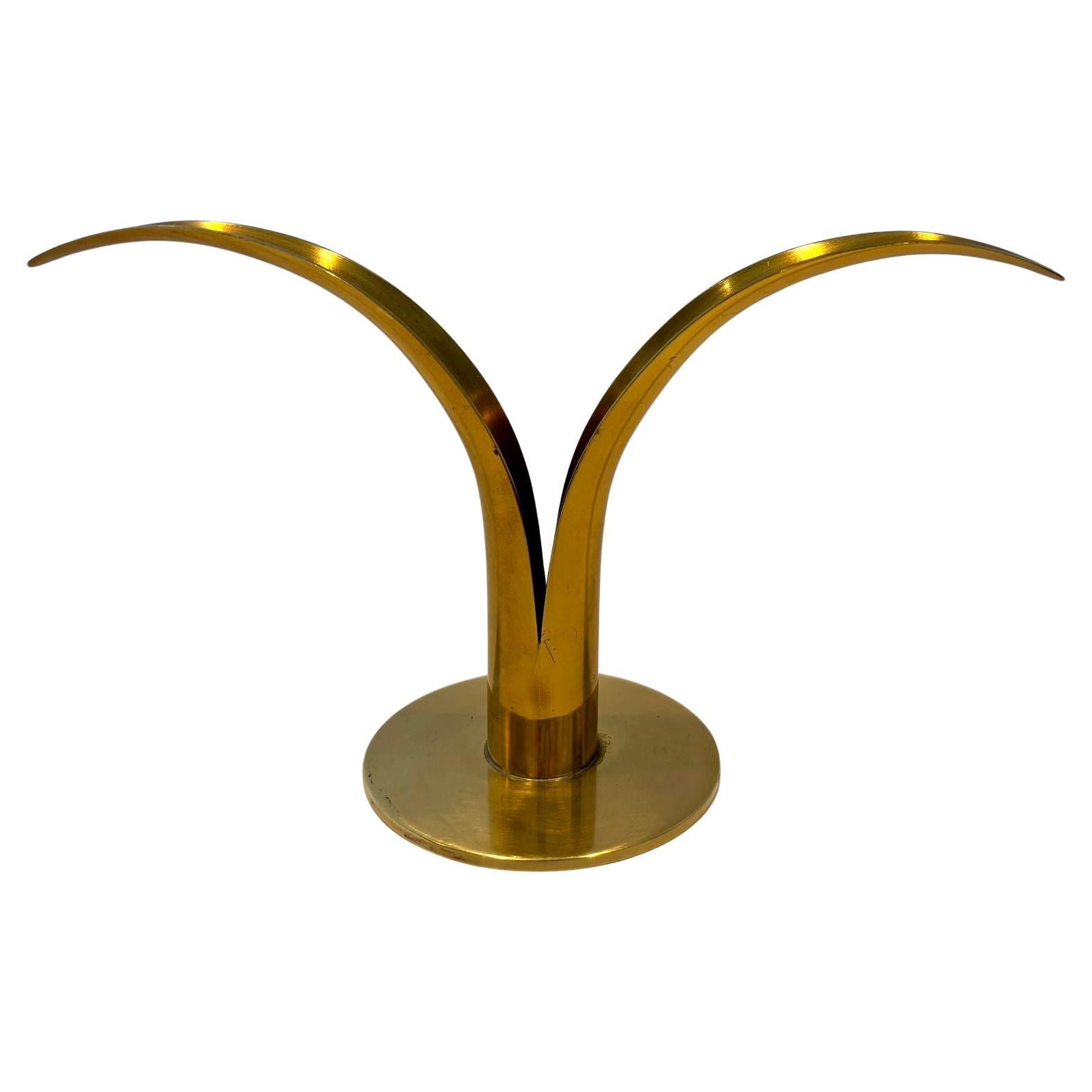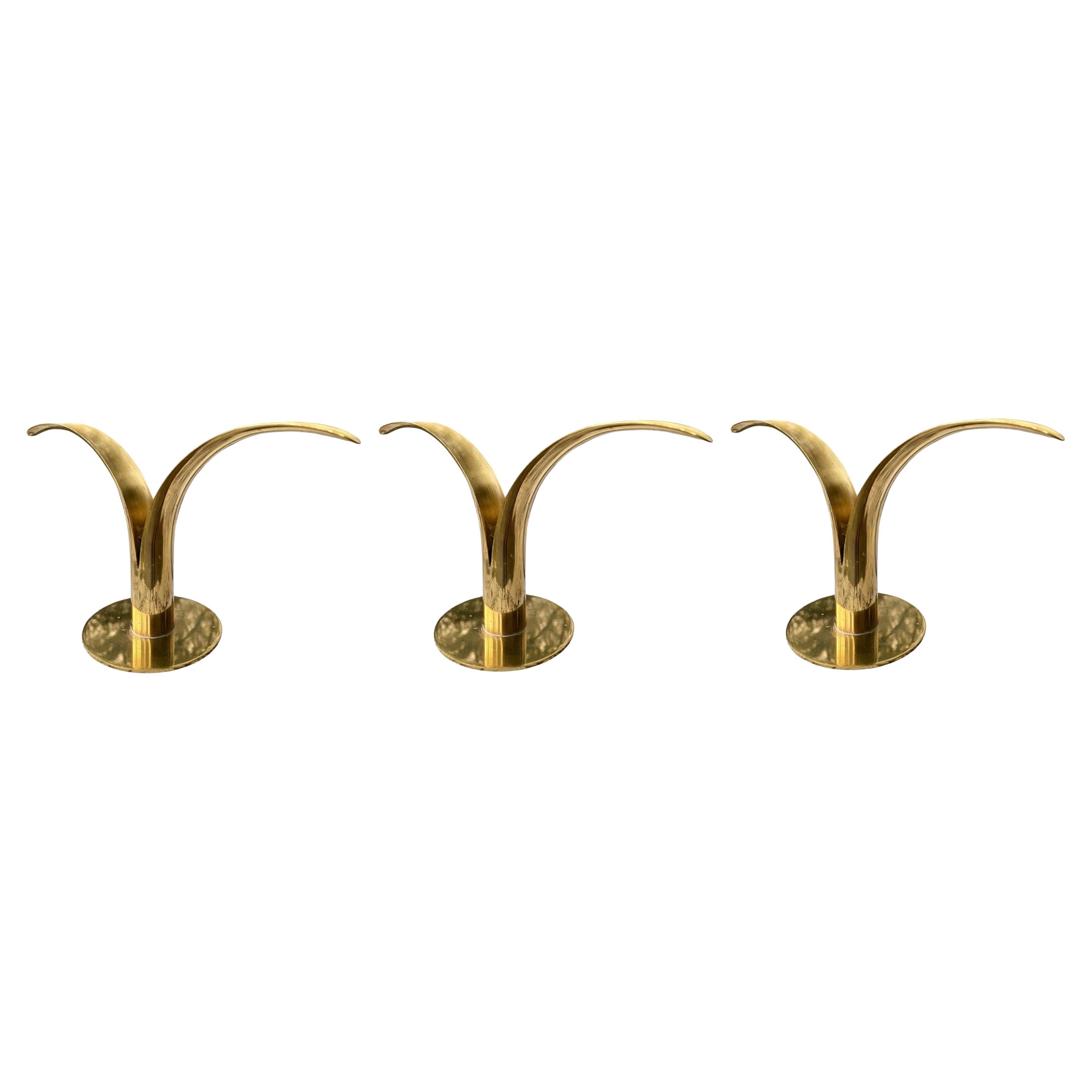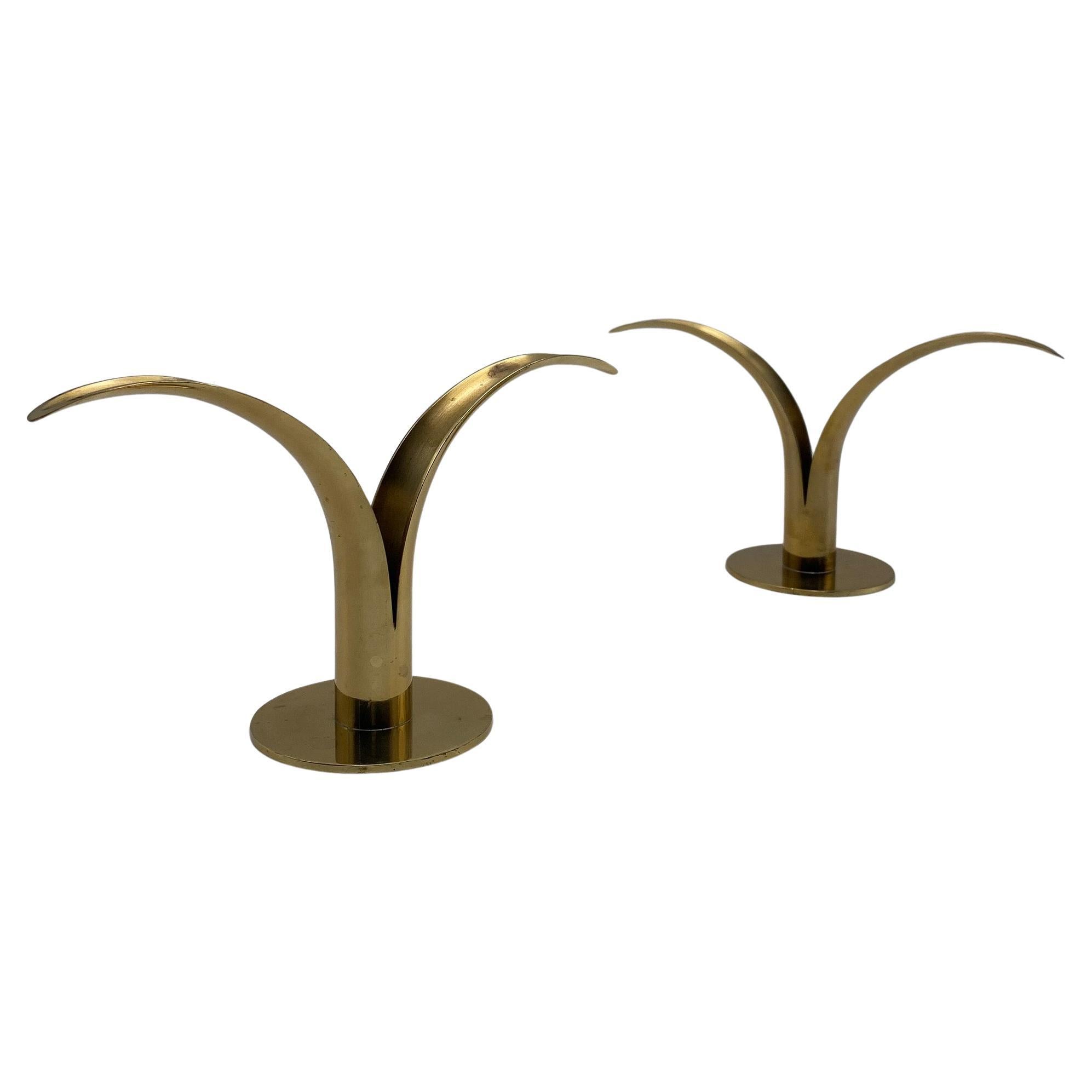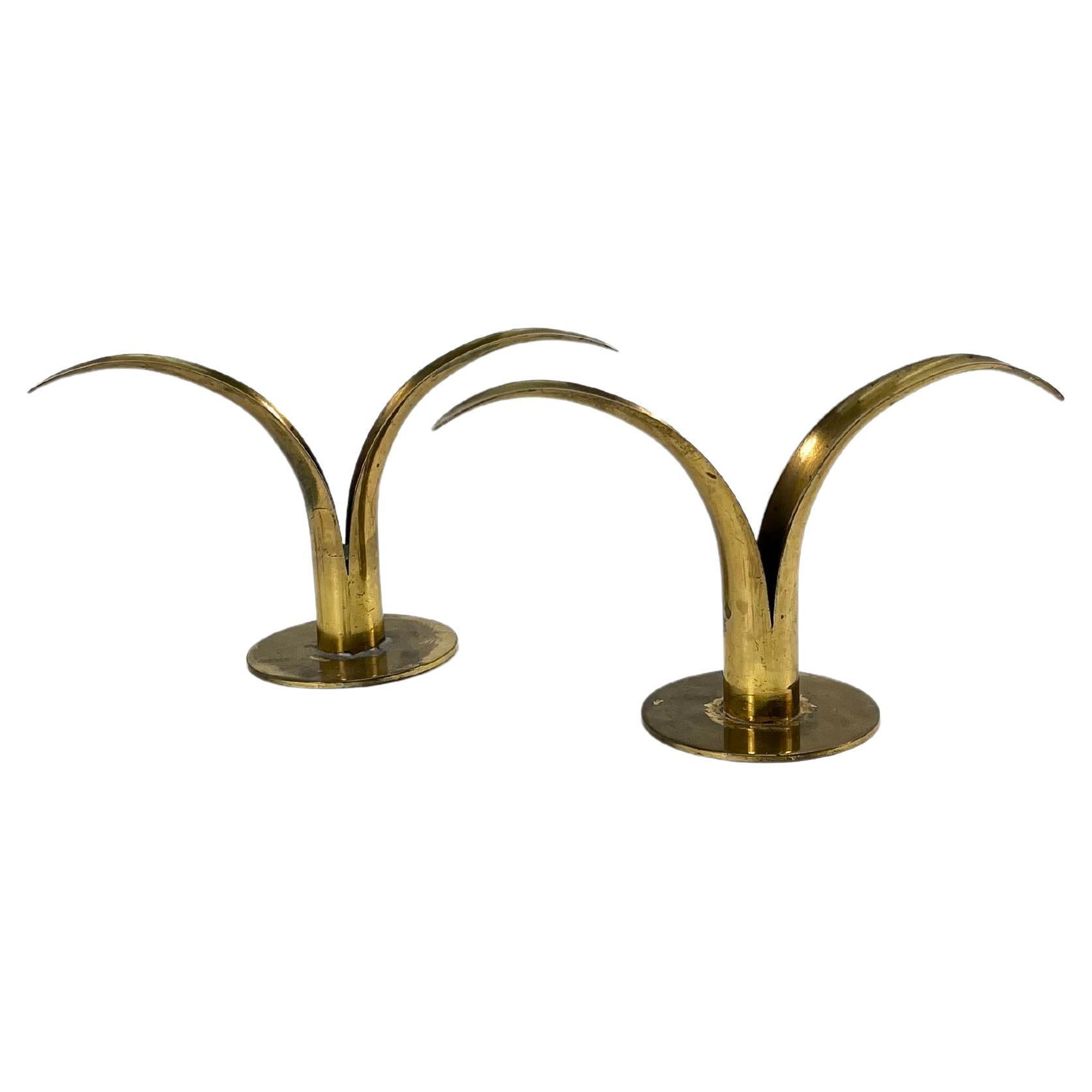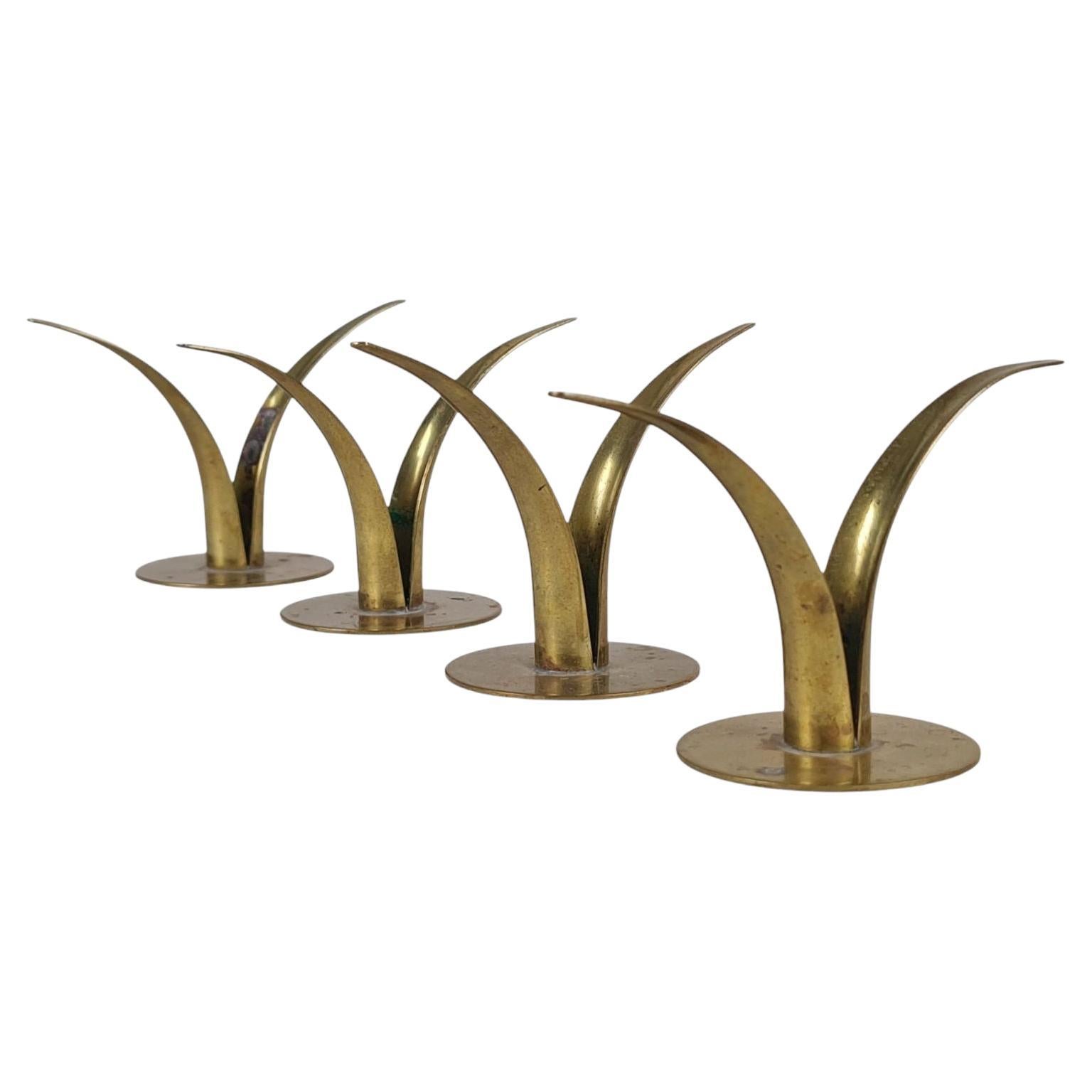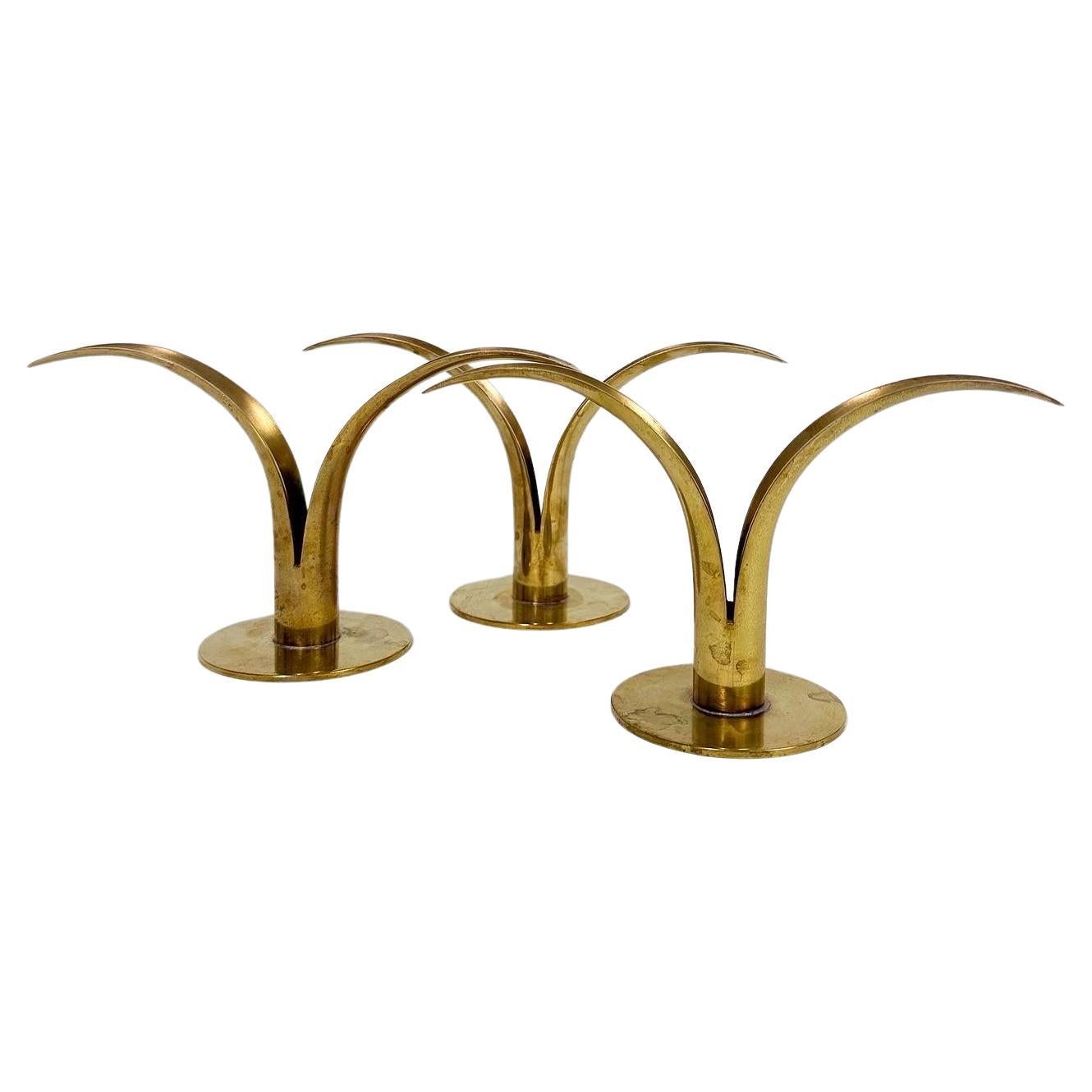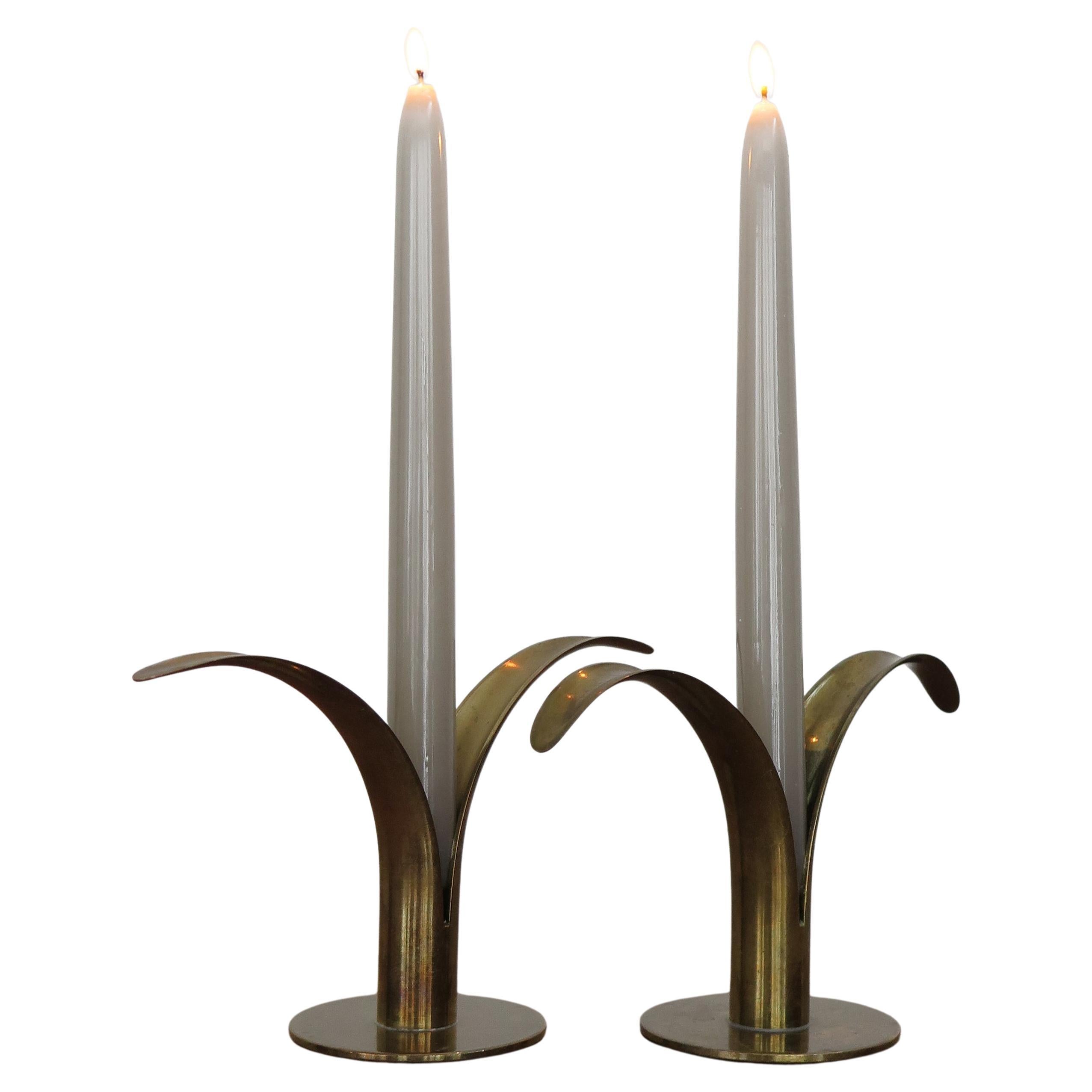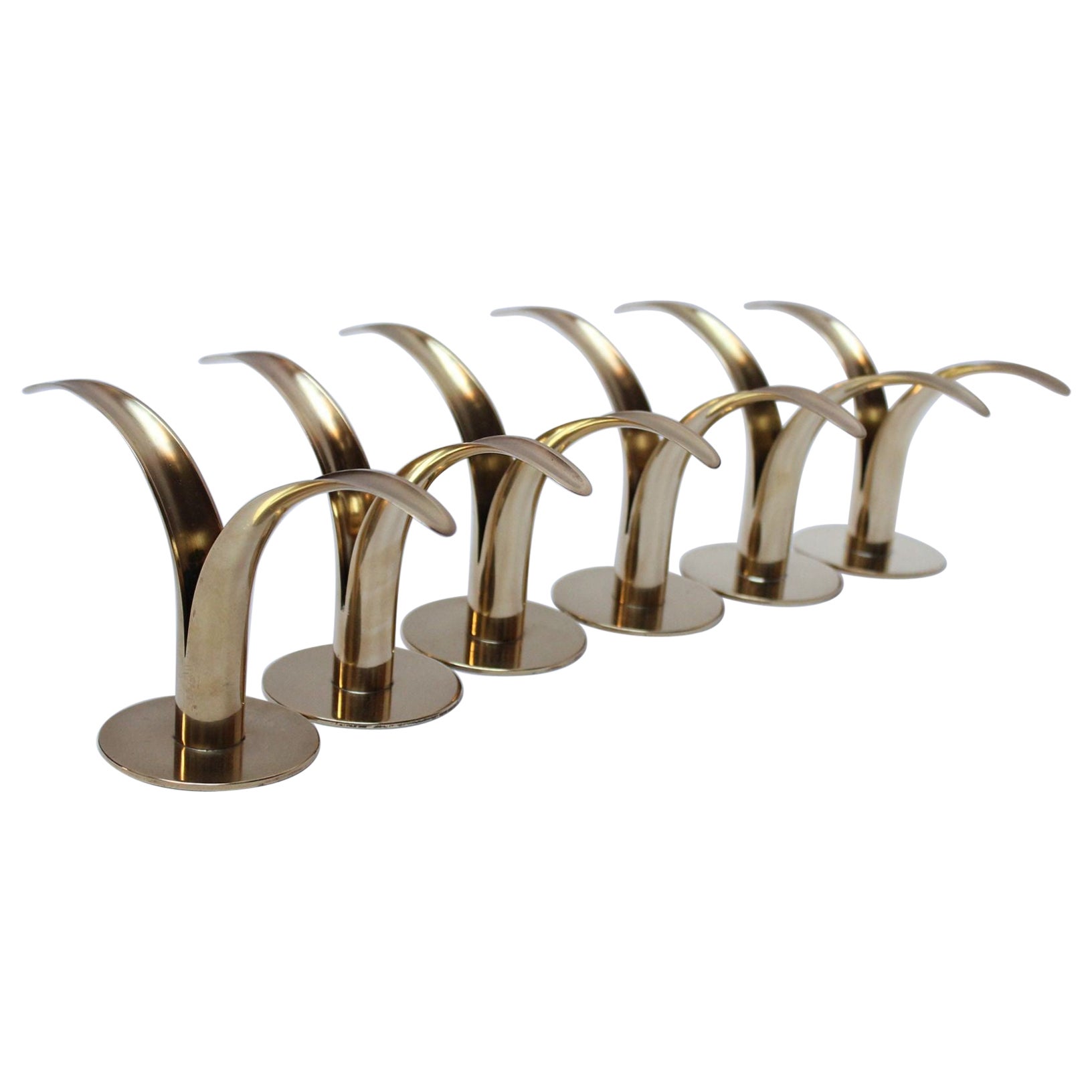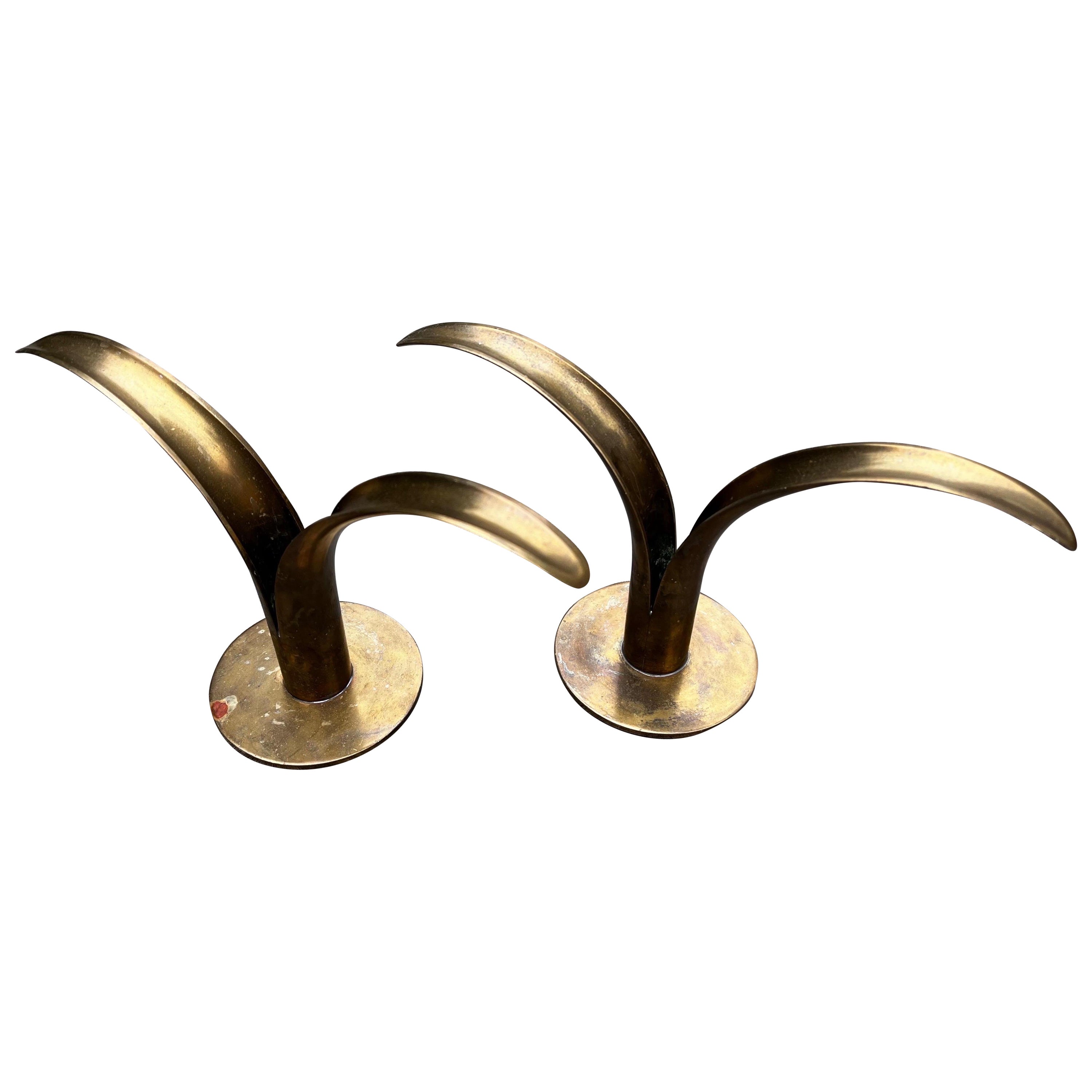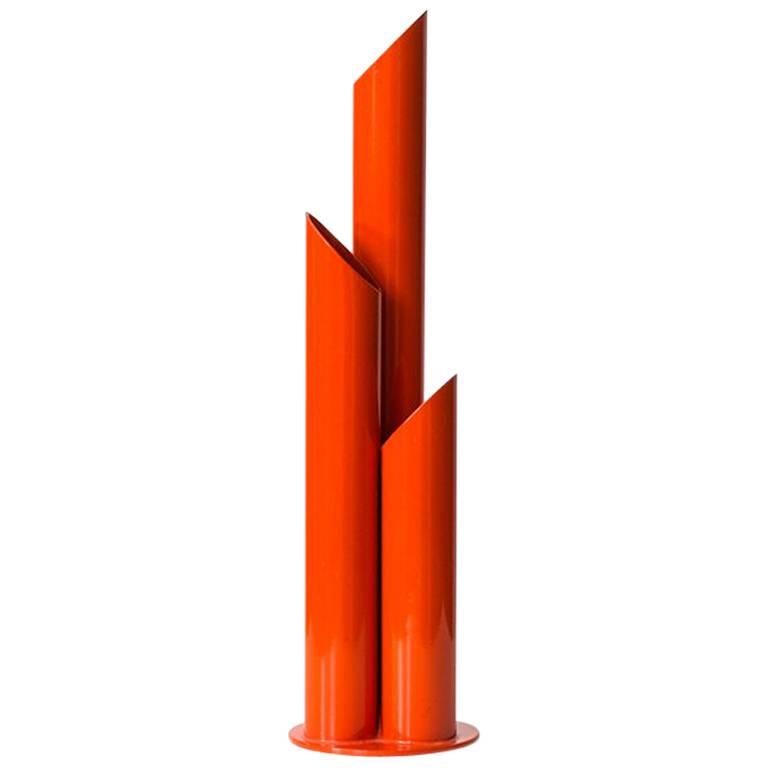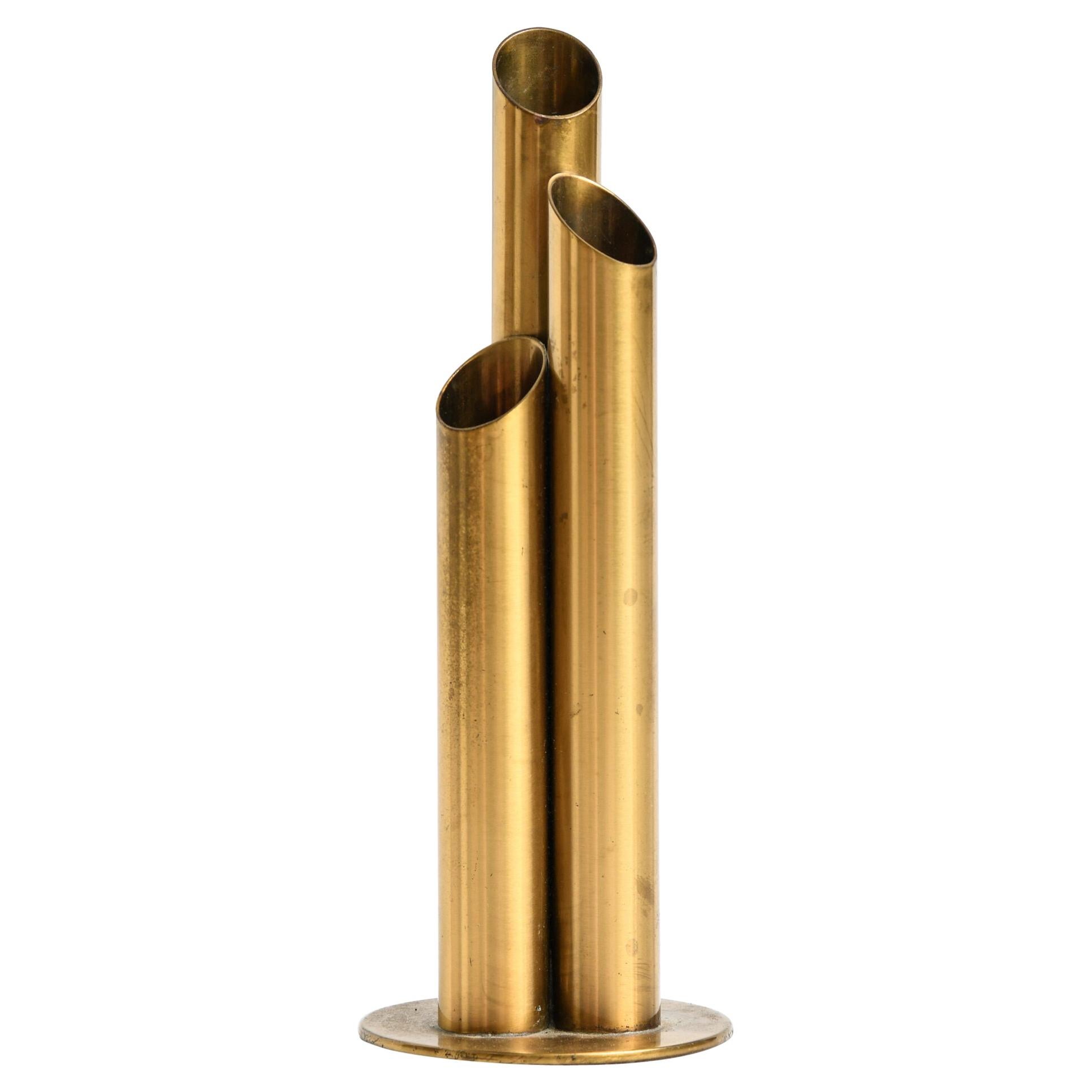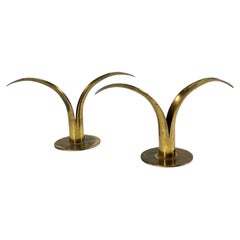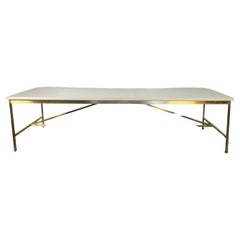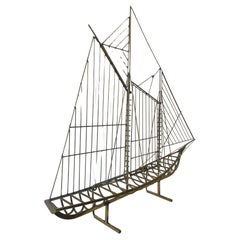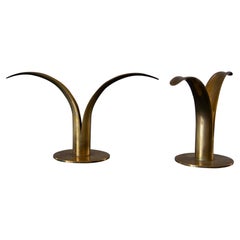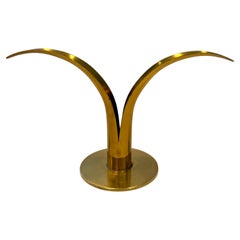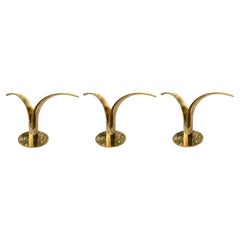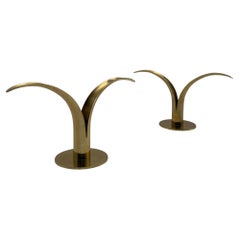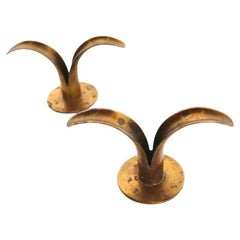
Ivar Åhlenius Björk, Lily / Liljan Candlesticks, Ystad Metall, Brass, Sweden
View Similar Items
Want more images or videos?
Request additional images or videos from the seller
1 of 6
Ivar Åhlenius Björk, Lily / Liljan Candlesticks, Ystad Metall, Brass, Sweden
About the Item
- Creator:Ivar Ålenius Björk (Designer)
- Dimensions:Height: 2 in (5.08 cm)Width: 3.5 in (8.89 cm)Depth: 3.5 in (8.89 cm)
- Sold As:Set of 2
- Style:Mid-Century Modern (Of the Period)
- Materials and Techniques:
- Place of Origin:
- Period:
- Date of Manufacture:circa 1960s
- Condition:Wear consistent with age and use.
- Seller Location:San Diego, CA
- Reference Number:1stDibs: LU6417234341692
About the Seller
5.0
Gold Seller
Premium sellers maintaining a 4.3+ rating and 24-hour response times
Established in 2020
1stDibs seller since 2022
61 sales on 1stDibs
Typical response time: 1 hour
Authenticity Guarantee
In the unlikely event there’s an issue with an item’s authenticity, contact us within 1 year for a full refund. DetailsMoney-Back Guarantee
If your item is not as described, is damaged in transit, or does not arrive, contact us within 7 days for a full refund. Details24-Hour Cancellation
You have a 24-hour grace period in which to reconsider your purchase, with no questions asked.Vetted Professional Sellers
Our world-class sellers must adhere to strict standards for service and quality, maintaining the integrity of our listings.Price-Match Guarantee
If you find that a seller listed the same item for a lower price elsewhere, we’ll match it.Trusted Global Delivery
Our best-in-class carrier network provides specialized shipping options worldwide, including custom delivery.More From This Seller
View AllLarge Liljan Candlestick Holders by Ivar Åhlenius Björk, Sweden Circa 1960
Located in San Diego, CA
Rare Large Liljian Candlestick Holders by Ivar Åhlenius Björk, Sweden Circa 1960 made by Ystad Metal in Sweden. slightly patinated.
Dimensions: 4.75”H x 8.5”W
Base width: 3.15”
Category
Mid-20th Century Swedish Mid-Century Modern Candle Sconces
Materials
Metal
$476 Sale Price
20% Off
Brass Bench by Edward Wormley for Dunbar
By Edward Wormley
Located in San Diego, CA
Solid Brass bench for Dunbar by Edward Wormley in new white boucle. Dunbar label affixed to bottom of the bench. This is an excellent piece for an entry way or large bedroom. We hav...
Category
Vintage 1950s American Mid-Century Modern Benches
Materials
Brass
Paul McCobb Brass Frame Coffee Table with White Vitrolite Glasstop.
Located in San Diego, CA
Paul McCobb brass frame coffee table with brass and white Vitrolite glass (Vitrolite-milk glass) top. This coffee table is model 8715 from Paul McCobb Directional furniture collectio...
Category
Vintage 1950s American Mid-Century Modern Coffee and Cocktail Tables
Materials
Brass
$4,480 Sale Price
20% Off
Brass Wire Yacht Sculpture of a Sailboat by Curtis Jere for Artisan House
By Artisan House, Curtis Jeré
Located in San Diego, CA
Brass Wire Yacht Sculpture, Brass Sailboat Sculpture by Curtis Jere for Artisan House. This is an imposing sculpture featuring a one piece three dimensional Sloop in all brass on a o...
Category
Vintage 1960s American Mid-Century Modern Figurative Sculptures
Materials
Brass
$1,560 Sale Price
20% Off
Janas Ottoman by Edward Wormley for Dunbar
Located in San Diego, CA
Ottoman by Edward Wormley for Dunbar, USA, c.1960s. The tufted double seat cushion is newly upholstered in a Sand Sherpa Boucle by Kravet, a beautiful compliment to the rich walnut f...
Category
Vintage 1960s American Mid-Century Modern Ottomans and Poufs
Materials
Bouclé, Walnut
George Nelson Rosewood Thin Edge 4 drawer Dresser by Herman Miller #1
By George Nelson
Located in San Diego, CA
A rosewood Thin Edge dresser designed by George Nelson for Herman Miller with exquisite rosewood grain and early original white porcelain handles.
The George Nelson Rosewood Thin Edge 4-drawer Dresser, crafted by Herman Miller, epitomizes the timeless elegance and functional sophistication synonymous with mid-century modern design. This dresser stands as an iconic piece within the George Nelson collection, renowned for its clean lines, minimalist aesthetic, and impeccable craftsmanship. This particular example boasts exquisite rosewood grain and early original white porcelain handles.
Constructed from rich rosewood veneer, the dresser boasts a warm, organic hue that exudes luxury and refinement. Its slender profile and thin edges create an illusion of lightness, enhancing the overall sense of modernity and grace. The 4 spacious drawers feature seamless integration of hardware, maintaining the dresser's sleek appearance while providing ample storage space for clothing, linens, or personal belongings.
Each detail of the George Nelson Rosewood Thin Edge series reflects an unwavering commitment to both form and function. Its timeless design transcends trends, making it a versatile addition to any interior decor scheme, from minamalist to post-modern. Whether used in a bedroom, living area, or office space, this dresser elevates the ambiance with its understated elegance and unparalleled craftsmanship, showcasing the enduring legacy of George Nelson's visionary design ethos.
About the Designer:
Not everyone thinks of George Nelson when they think “Modernism”—but they should. Here’s why:
Looking at the outset of George Nelson’s career, few would have guessed that his legacy would crown him as one of the most influential individuals in Modernism—story has it that the young Ivy Leaguer stumbled into the Yale School of Architecture seeking shelter from the rain, and only then did he consider studying design. His legacy, though, would be one that touched nearly every corner of American Modernism as we think of it today.
As an architect, author, furniture designer, graphic designer, exhibition designer, teacher, amateur photographer, and general provocateur, George Nelson shaped the course of design in America for over four decades.
After completing his two Bachelor’s degrees (one in architecture, the other in fine arts), Nelson went on to accept a traveling fellowship in Rome, which interfaced him with figures like Ludwig Mies Van Der Rohe, Walter Gropius, Le Corbusier, and Gio Ponti all of which he interviewed forPencil Point, bringing the European vanguard to the attention of the magazine’s American readership.
At this point in his career, Nelson had devoted himself to writing, joining Architectural Forum as its first associate editor in 1935.
For nearly a decade, Nelson’s post as an editor brought him face-to-face with many of the leaders of the Modernism movement in the U.S., and through these exchanges, his own stance in the design world began to solidify. For Nelson, the purpose of design was to improve the world in accordance with the laws of nature—and while he hadn’t yet done much designing himself, he was busy teasing out the theoretical details of architecture. In 1940, Nelson co-authored Tomorrow’s House with Henry Wright, and the book went on to be a great commercial success, introducing concepts like the “family room,” and more broadly assuming a solutions-based perspective for architectural design.
It wasn’t long before the book earned him the favorable attention of D.J. Depree, the chairman of Herman Miller the American furniture manufacture. Despite Nelson’s inexperience in furniture design, Depree saw potential in the writer’s approach to the industry: solutions-oriented design with a practical lean. Nelson became the company’s Director of Design in 1947, under the condition that he be allowed to continue his work outside of the company.
From 1947 to 1972, Nelson oversaw the design department at Herman Miller, bringing in the icons that would shape some of the most memorable pieces of mid-century design, from such people as Ray and Charles Eames and Harry Bertoia to Richard Schultz, Donald Knorr, and Isamu Noguchi.
Beginning in the mid-1950s, Nelson’s own design firm began its work in earnest, producing furniture and pioneering a ubiquitous incorporation of design, bringing that same consideration for pragmatism and aesthetics to advertising and marketing materials, image management, and graphic programs. His own firm incorporated in 1955, tapping many of the same designers from the Herman Miller roster for collaborations under George Nelson Associates, Inc.
It was during this period of Nelson’s life and career that many of his most iconic designs came onto the scene—many will be instantly familiar furniture silhouettes that perhaps you didn’t know sprung from George Nelson himself.
Designing his first collection in 1945 and appointed design director in 1947, Nelson quickly expanded his purview and transformed the company. Confirming De Pree’s early assessment of Nelson as someone “thinking well ahead of the parade,” he redesigned everything from Herman Miller’s product line to its graphics and marketing and advertising materials. Over the course of his long association with Herman Miller, Nelson designed hundreds of pieces of furniture and recruited other designers, including Charles and Ray Eames, Alexander Girard, and Isamu Noguchi, now all widely acknowledged as some of the brightest talents of the time.
Nelson developed his own designs—from furniture to architecture, and exhibitions to graphics—in his New York City studio, known variously over the years as George Nelson, George Nelson & Associates, and George Nelson and Company. The staff included significant designers in their own right such as Irving Harper, George Mulhauser, Ernest Farmer, Gordon Chadwick, George Tscherny...
Category
Vintage 1950s American Mid-Century Modern Dressers
Materials
Aluminum
You May Also Like
1950s Ivar Åhlenius Björk Ystad Metall Liljan Brass Candelsticks - a Pair
By Ystad-Metall
Located in Los Angeles, CA
Pair of organic candlesticks/candleholders, designed by Ivar Åhlenius Björk for Ystad Metall. Made of brass and lacquered steel. Stamped.
Category
Mid-20th Century Swedish Mid-Century Modern Candlesticks
Materials
Brass
Ivar Alenius Bjork for Ystad Metall Liljan Brass Candlestick Sweden 1950s
By Ystad-Metall
Located in North Hollywood, CA
Vintage organic metal candlestick, candleholder, designed by Ivar Åhlenius Björk for Ystad Metall.
Designed in 1939 for the Scandinavian Pavilion of the 1939 New York World Fair.
The...
Category
Mid-20th Century Scandinavian Scandinavian Modern Candlesticks
Materials
Brass
Ivar Ålenius Björk Brass Candle Holders for Ystad Metall, Sweden, 1960's
By Ivar Ålenius Björk, Ystad-Metall
Located in Round Top, TX
Elegant set of three sculptural brass candle holders, manufactured in Sweden by Ystad Metall, design by Ivar Ålenius-Björk in 1939. One pair is matched in brushed brass and marked "Sweden Lily...
Category
Mid-20th Century Swedish Mid-Century Modern Candelabras
Materials
Brass
Ivar Ålenius Björk Brass Candle Holders for Ystad Metall, Sweden, 1960's
By Ystad-Metall, Ivar Ålenius Björk
Located in San Juan Capistrano, CA
Ivar Ålenius Björk Brass Candle Holders for Ystad Metall, Sweden, 1960's. Makers mark to the bottom of each example.
Category
20th Century Swedish Mid-Century Modern Candlesticks
Materials
Brass
$308 Sale Price / set
20% Off
Ivar Alenius-Bjork A set of "Lily" Candle Sticks, Brass, Ystad Metall 1950s
By Ystad-Metall, Ivar Ålenius Björk
Located in Helsinki, FI
A set of 4 very beautiful and delicate candleholders designed by Ivar Ålenius Björk in 1939 and manufactured by Ystad Metall in Sweden. These pieces are a part of a series of candle ...
Category
Vintage 1950s Swedish Scandinavian Modern Candelabras
Materials
Brass
$1,387 / set
Free Shipping
Set of Three Lily Candle Sticks Ivar Alenius Björk for Ystad Metall Sweden 1940s
By Ystad-Metall, Ivar Ålenius Björk
Located in Basel, BS
Ivar Ålenius-Björk Lily candle holder (Liljan) including rare original glass insert to use as a vase, designed in 1939 for the Scandinavian Pavillon of the 1939 New York World‘s Fair...
Category
Vintage 1930s Swedish Mid-Century Modern Candlesticks
Materials
Brass
Recently Viewed
View AllMore Ways To Browse
Dior Magazine Holder
Ystad Lily
Ivar Ahlenius Bjork
Foo Dog Candlestick
Goran Warff Sunflower
Gorham Weighted Candle
Iittala Candleholder
Iittala Festivo Glass Candlesticks
Marius Giuge Vallauris
Murano Glass Candle Stick
Neoclassical Pair Of Sterling Silver Corinthian Column Candlesticks
Ram Horns Holders
Sarpaneva Arkipelago
Alter Sticks
Antique Pink Glass Candle Holders
Arts And Crafts Candle Sticks
Brass Dolphin Candlesticks
Bronze Cupid Candlesticks
